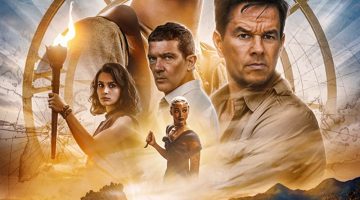By Joey Thyne
It seems like every other week there is a new superhero movie released. Many have cited it as our generation’s Western genre. Fourteen years ago, “Spider-Man” was so successful because it was fresh and innovative. Now, from Netflix shows to features, it seems like Marvel is churning out material before it is able to count the money from the last project, not to mention competition from DC.
So, with such oversaturation in the category, the greatest challenge is simple: to stand out. “Doctor Strange” takes that challenge.
“Doctor Strange,” based on Marvel comics originating from the 1960s, is about an arrogant yet extremely talented surgeon who permanently injures his arms in a car accident. His search for restoration leads him to a mystic temple in the Himalayas. Strange becomes an apprentice of the “Ancient One,” learns magic spells and eventually dons the “cloak of levitation.”
In the film, Strange and his partner, Karl Mordo, have to combat Caecilius and his gang, who have stolen pages from a sacred text of the Ancient One’s in order to raise Dormammu, a powerful being in the dark dimension who will help them defy death.
Got all that?
“Doctor Strange” is able to stand out in two key ways: Benedict Cumberbatch and its visuals.
Cumberbatch, a classically trained theater actor best known for his Emmy-winning performance as Sherlock Holmes in “Sherlock” and the internet’s jest at his labyrinthine name, delivers a stellar performance. Although some of the lines may seem silly, he delivers each and every one with fully devoted integrity. His pompous genius swagger is reminiscent of Robert Downey Jr.’s Iron Man.
Secondly, the visual effects in “Doctor Strange” are dazzling. Several times characters travel through dimensions, which inspires interludes of psychedelic imagery. This type of abstract art is rare in big-budget blockbusters, especially those owned by a conglomerate like Disney. These kaleidoscopic stretches will definitely leave a distinct memory in any viewer’s head.
The movie, of course, is not innocent of pitfalls common in action movies. The humor is often forced and awkward. References to Drake and Wi-Fi passwords may induce eye rolls.
Rachel McAdams’ character is trivial and almost entirely superfluous to the plot, thrown in there only to add a romantic dimension. It is a prime example of how terrible Hollywood is at writing female characters. She looks even worse when contrasted with Tilda Swinton’s pivotal and nuanced role of the “Ancient One.”
In the second act, the dialogue deteriorates into a lot of cerebral theoretics involving time and space. It can be all very convoluted, and at times it seems like the movie itself forgets what it’s talking about. Thankfully, it gets back on track.
Other than that, it hits all of its marks. Marvel has entertainment down to a science. The battle sequences are well-choreographed and thrilling. The music is phenomenal. There is a Stan Lee cameo which is grin-worthy. There is a signature post-credits scene that (spoilers) features a discussion with Thor and teases Doctor Strange being introduced into the Avengers.
With Oscar season upon us, “Doctor Strange” may not be as challenging or rewarding as some of the other films being released, but in a sea of comic-book adaptations, it is one of the better ones.
Joey Thyne can be reached at bnelson@sagebrush.unr.edu and on Twitter @b_e_nelson.












